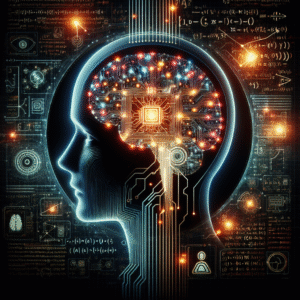Artificial Intelligence (AI) is no longer the realm of science fiction. Today, it’s an integral part of our lives, influencing everything from how we shop to how businesses operate. But for many, AI remains a complex, elusive concept. This article aims to demystify AI, offering simple steps for beginners who wish to explore this fascinating field.
Understanding the Basics
Before diving into AI, it’s important to grasp some foundational concepts.
What is AI?
AI refers to the simulation of human intelligence processes by machines, especially computer systems. It encompasses a range of technologies, from machine learning to natural language processing, enabling machines to perceive, reason, learn, and interact in a human-like manner.
Why AI?
AI’s appeal lies in its ability to perform tasks traditionally requiring human intelligence. It automates routine processes, enhances decision-making with data-driven insights, and even creates new possibilities across industries, from healthcare to finance.
Getting Started with AI
1. Familiarize Yourself with Fundamental Concepts
Begin with the basics by familiarizing yourself with key AI concepts:
-
Machine Learning (ML): A subset of AI focused on building systems that learn from data, improving their performance over time.
-
Deep Learning: A more advanced form of ML using neural networks with many layers. It’s the technology behind significant AI advancements in image and speech recognition.
- Natural Language Processing (NLP): Enables machines to understand and respond to human language. Applications include chatbots and language translation tools.
2. Learn Programming Fundamentals
Programming is essential in AI, and most AI applications are built using languages like Python due to its readability and extensive library support. Begin with basic programming concepts:
-
Variables, Loops, and Functions: Understand how to manipulate data, run repetitive tasks, and create reusable code blocks.
-
Data Structures: Learn about lists, dictionaries, sets, and tuples which are crucial for handling data efficiently.
- Libraries and Tools: Familiarize yourself with libraries like NumPy for numerical computations and Pandas for data manipulation.
3. Mathematics: The Backbone of AI
AI heavily relies on mathematical concepts. Gaining a strong math foundation will enhance your understanding of AI algorithms:
-
Linear Algebra: Vital for understanding how algorithms work with data inputs and transformations.
-
Calculus: Helps in understanding how changes affect outputs, crucial for optimization in learning algorithms.
- Probability and Statistics: Essential for data analysis and learning algorithms, impacting how models interpret data and make predictions.
4. Experiment with Practical AI Projects
Apply theoretical knowledge through hands-on projects:
-
Beginner Projects: Start with projects like sentiment analysis, where you analyze text data to determine sentiment, or create a simple image recognition model.
- Kaggle Competitions: Platforms like Kaggle provide datasets and competition challenges for real-world AI problems. They are a great way to learn through practice.
5. Explore AI Frameworks and Tools
Frameworks simplify implementing AI algorithms:
-
TensorFlow: An open-source library developed by Google for deep learning projects.
-
PyTorch: Developed by Facebook, it is known for its flexibility and ease of use, especially in research.
- Scikit-Learn: A library for simple and efficient tools for predictive data analysis implemented in Python.
6. Engage with the AI Community
AI is a rapidly evolving field, and staying updated is crucial:
-
Online Courses and Tutorials: Platforms like Coursera, edX, and Udacity offer AI courses ranging from beginner to advanced levels.
- Forums and Discussion Groups: Engage with communities like Stack Overflow, Reddit’s r/MachineLearning, and AI-specific forums to seek advice, share knowledge, and stay current with industry developments.
7. Develop a Problem-Solving Mindset
AI is not about memorizing algorithms but solving problems:
-
Critical Thinking: Analyze problems and assess how AI can provide solutions.
- Creativity: Innovate new approaches and explore unconventional solutions.
Ethical Implications of AI
As you delve into AI, consider the ethical implications:
Bias and Fairness
AI systems can inadvertently perpetuate biases present in their training data. It’s critical to ensure fairness by designing models with unbiased data and testing them to detect any unfair behavior.
Privacy Concerns
AI systems often utilize vast amounts of data, raising privacy concerns. Adhere to privacy laws and use data responsibly by anonymizing and securing sensitive information.
Accountability
AI decisions, especially in critical areas like healthcare and finance, must be transparent and accountable. Understanding AI’s decision-making process is vital for ensuring trust and reliability.
Conclusion
Embarking on a journey into AI can be daunting, given its complexity and breadth. However, by taking one step at a time—learning the basics, practicing with projects, and engaging with the community—you can navigate this fascinating field with confidence. AI promises exciting opportunities to innovate and improve countless aspects of human life.
Remember, AI is a tool, and like any tool, its power lies in how you apply it. With dedication, creativity, and problem-solving skills, you can harness AI to contribute meaningfully to technology’s future.




